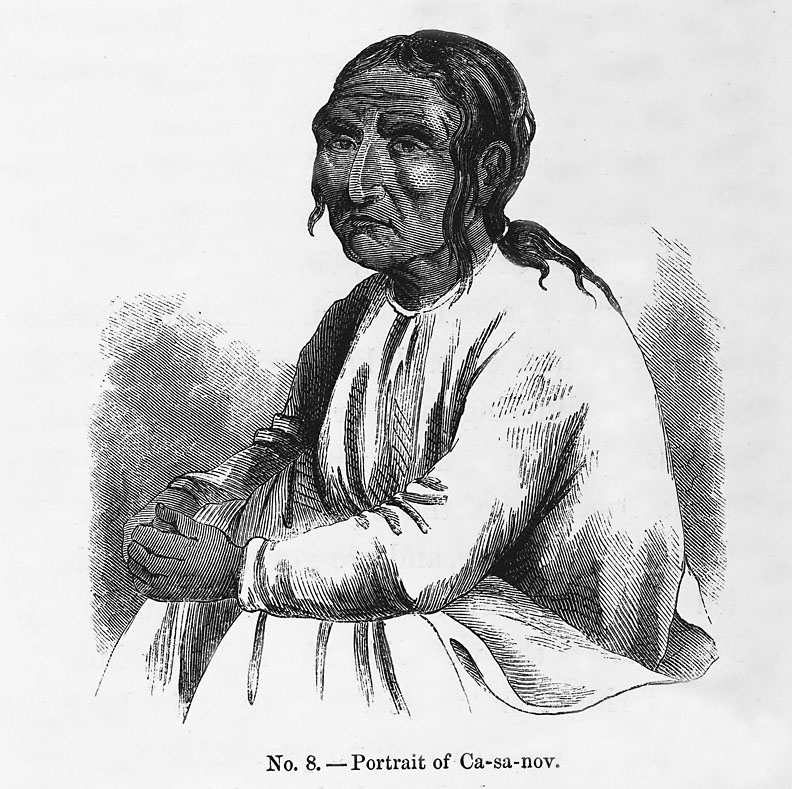- Catalog No. —
- OrHi 76414
- Date —
- 1859
- Era —
- 1846-1880 (Treaties, Civil War, and Immigration)
- Themes —
- Environment and Natural Resources, Exploration and Explorers, Native Americans
- Credits —
- Oregon Historical Society
- Regions —
- Coast Columbia River
- Author —
- Paul Kane
Cassino, Chinookan Headman, 1846
This 1859 reproduction of an 1846 sketch by Paul Kane depicts the Chinookan headman Cassino (pronounced káss-i-no), an important figure in the early history of the Oregon Country. Nothing is known of Cassino’s early life, though he was probably born in the 1780s or early 1790s. The first reference to him in the historical record appears in connection with the 1811 Astorian fur trading expedition. The trader Gabriel Franchere noted that Cassino was “a young and handsome man,” while Alexander Ross refers to Cassino as a “principal chief” who resided near present-day St. Helens, Oregon.
Those who met Cassino agreed that he was an intelligent and charismatic, though sometimes ruthless, leader. Missionary Samuel Parker wrote in 1836 that Cassino was “a man of talents, and his personal appearance noble.” Some observed that his influence was limited to a single village, usually described as being located several miles downstream from Vancouver, while others claimed that he controlled a large territory from the Cascades (near present-day Bonneville Dam) downstream to the mouth of the Cowlitz River.
Cassino’s life spanned the most tumultuous period in the history of Chinookan peoples, and his influence likely expanded and contracted as the Chinookan world rapidly changed. Depopulation resulting from waves of epidemic diseases during the 1830s resulted in the social reorganization of Chinookan peoples. The Chinookans had a village-based social system prior to white resettlement. After the epidemics, which reduced the Chinookan population by more than 90 percent during Cassino’s lifetime, survivors from formerly autonomous villages often joined together.
In 1841, the American explorer Charles Wilkes noted that, prior to the epidemics, Cassino was able to muster close to 500 warriors. By the time Wilkes met the aged chief, however, he was alone, “his land, tribe, and property all departed.” Cassino died around 1850.
Further Reading:
Spencer, Omar. “Chief Cassino.” Oregon Historical Quarterly 34 (1933): 19-30.
Vaughn, Thomas, editor. Paul Kane: The Columbia Wanderer. Portland : Oregon Historical Society Press, 1971.
Written by Cain Allen, © Oregon Historical Society, 2003.
